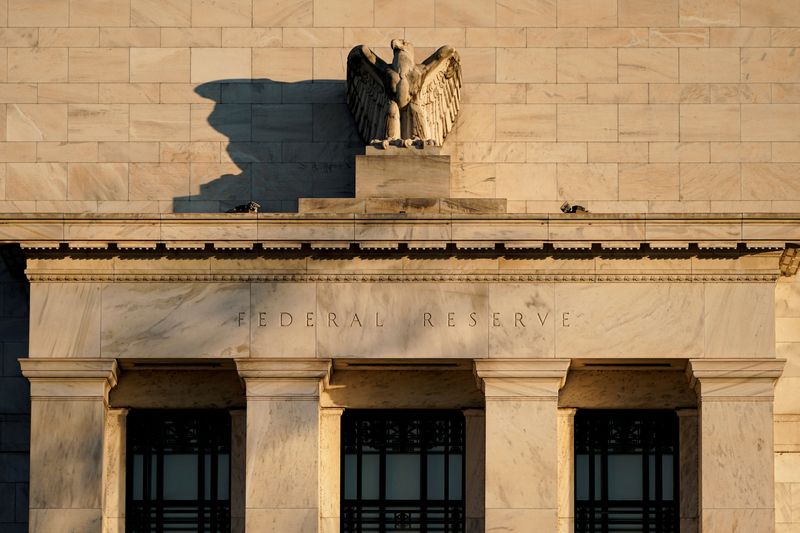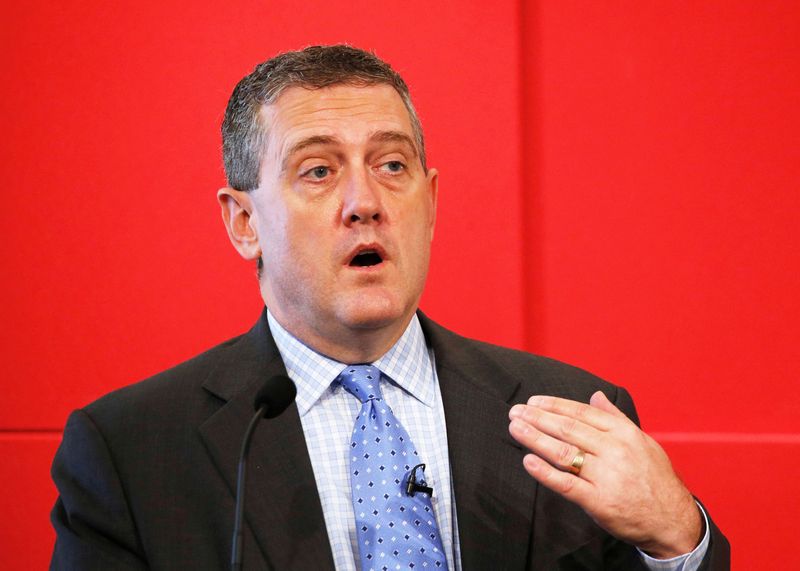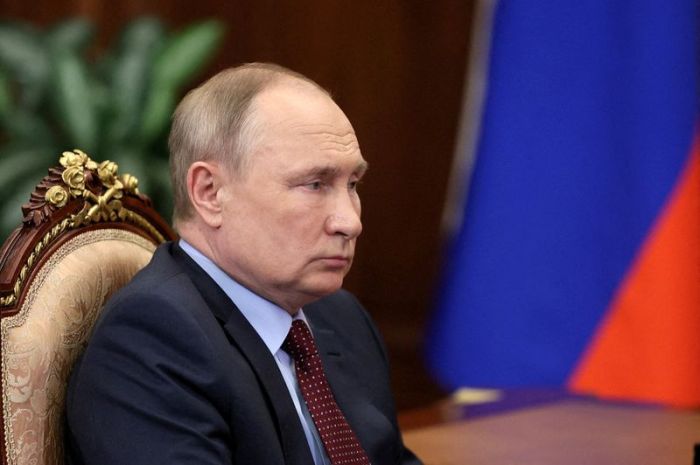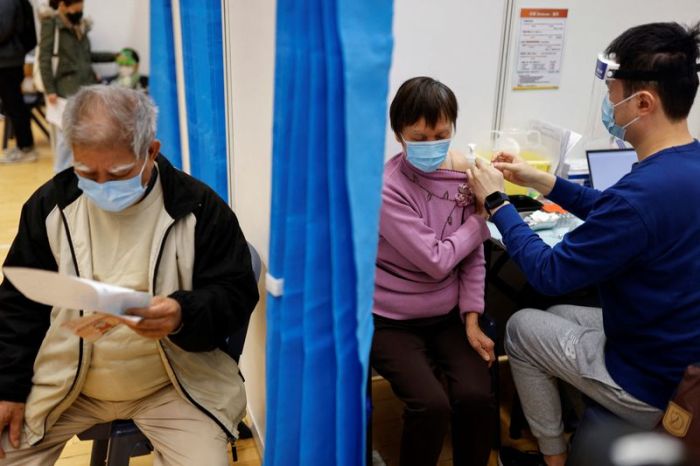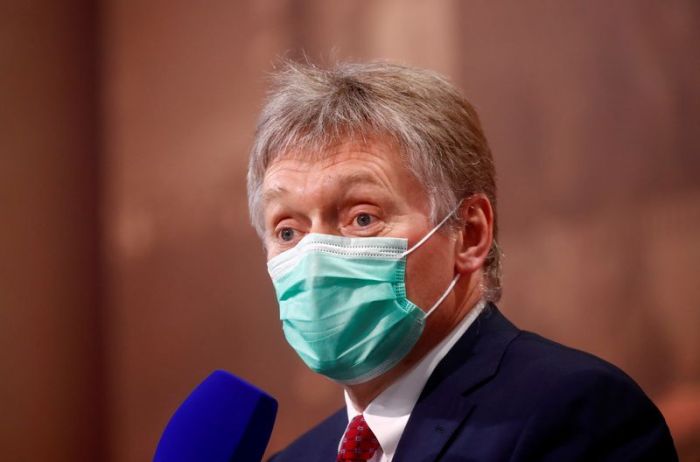(Reuters) -Two of the Federal Reserve’s most hawkish policymakers on Friday said the central bank needs to take more aggressive steps to combat inflation, and two others said they would be open to it – one of whom just six months ago envisioned a 2022 with no rate increases at all
It still could be that the Fed only needs to raise rates “modestly” above neutral, Minneapolis Fed President Neel Kashkari said in an essay published on the regional Fed bank’s website in which the former dove said he wants to raise rates to 1.75% to 2% this year.
But, he said, the economy may have shifted to a “high-pressure, high-inflation equilibrium,” requiring the Fed “to act more aggressively and bring policy to a contractionary stance in order to move the economy back to an equilibrium consistent with our 2% inflation target.”
Which way the Fed needs to go will depend on what economic data shows over the course of the year, he said.
Fed officials hiked interest rates this week for the first time in three years and signaled that more rate increases are coming as the central bank removes the support provided during the coronavirus pandemic and works to tame inflation at 40-year highs.
Most Fed policymakers see rates rising next year to a level that would restrict growth, forecasts show, but exactly how fast or high rates should rise is a matter of debate.
Earlier in the day, Fed Governor Chris Waller said economic risks around Russia’s war in Ukraine led him to vote in favor of a quarter percentage point rate increase at this week’s meeting rather than dissent in favor of the larger half point increase he had been advocating.
“The data is screaming at us to go 50 (basis points) but the geopolitical events were telling you to go forward with caution,” Waller said on CNBC. But in the months ahead Waller said he would favor a series of half percentage point increases to “front load” tighter policy and have a quicker impact on inflation.
St. Louis Fed President James Bullard, who dissented on this week’s action in favor of a half point increase, said on Friday that officials should raise the Fed’s overnight lending rate to more than 3% this year to catch up with elevated inflation. After Wednesday’s move, the Fed’s target rate is now 0.25-0.50%.
He said he not only favored a half point increase this week, but rate increases at a pace that would require half point increases at five of the Fed’s six remaining meetings this year.
“The U.S. economy has proven to be especially resilient,” against the pandemic and geopolitical risks, Bullard said in a statement explaining his dissent.
With inflation by the Fed’s preferred gauge running above 6%, triple its 2% target, Bullard said more Fed action was needed “to prudently manage the U.S. macroeconomic situation.”
INFLATION FIGHTING STANCE
Though most Fed officials see six more quarter-point rate increases this year, seven of the Fed’s current 16 policymakers, like Bullard, think rates should go even higher by year’s end.
To counteract inflation faster Waller said the central bank should pack more of that into the next few months. “I really favor front-loading our rate hikes…Just do it rather than just promise it,” he said.
While he did not specify where he would like to see the target federal funds rate end the year, Waller said he would prefer to get above the 2% to 2.25% level he sees as acting neutrally for the economy.
Half of Fed policymakers see rates rising to at least 2.8% by the end of next year, high enough to brake economic growth in the view of most of them, projections released this week show.
With rates still far from a level that would constrain growth, that rate path “shouldn’t drive economic decline,” said a fourth Fed policymaker, Richmond Fed President Thomas Barkin.
Barkin said he is “very open” to a half-point rate hike if inflation accelerates or expectations move up. But, he said, setting the pace is a “balancing act” between raising rates enough to contain inflation but not so much it hurts jobs.
Kashkari did not address the possibility of a half-point hike, but the shift in his policy outlook encapsulates the Fed’s pivot from policy designed to cushion the pandemic crisis to its current inflation-fighting stance.
In September he was the Fed’s most dovish member, arguing that as the pandemic receded inflation would cool this year without any interest rate hikes as supply chains got fixed, workers returned to the labor force, and super-charged demand for goods ebbed.
Instead, inflation has accelerated to well above the Fed’s target. Supply chains have been slow to recover and a resurging pandemic in China risks continued bottlenecks; wage growth has picked up instead of slowing and, in what Kashkari said was his biggest surprise, spending on goods remains elevated.
Speaking at a North Dakota Petroleum Council event, Kashkari underscored his hawkish turn, saying he favors starting to reduce the Fed’s balance sheet next month at a pace twice as fast as the Fed used the last time it shrank its portfolio.
He said he still thinks it’s possible inflation is mostly driven by a supply-demand imbalance that will right itself, allowing the Fed to raise rates only slightly above the 2% he sees as a neutral level.
But Russia’s invasion of Ukraine makes inflation pressures worse, and continued strong household spending suggests that “robust economic activity and the associated high inflation may be sustained and in fact might not be transitory,” he said.
(Reporting by Howard Schneider and Ann Saphir; Writing by Jonnelle Marte; Editing by Andrea Ricci)

